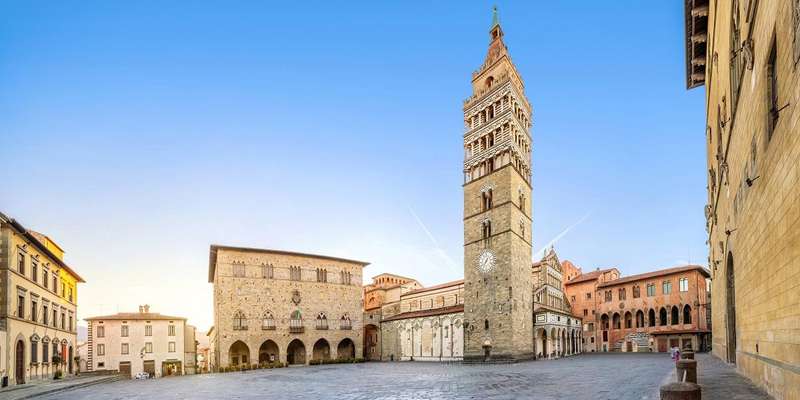- Home
- Useful Tips
- Pistoia's Baptistery: visiting...
Most visitors to Tuscany rush past Pistoia's Baptistery without realizing they're missing one of Italy's finest examples of medieval religious architecture. Over 80% of day-trippers spend less than 10 minutes here, overwhelmed by crowds or confused by the sparse signage. What they don't know is that this 14th-century marvel holds artistic treasures rivaling Florence's more famous sites – if you know when to visit and where to look. The frustration mounts when travelers later discover they've missed the exquisite pulpit carvings or the perfect afternoon light through the rose window. With visitor numbers increasing 30% annually since 2020, these oversights are becoming more common. This isn't just about seeing another historic site; it's about connecting with the spiritual heart of Tuscan craftsmanship before mass tourism alters its intimate character forever.


Decoding the Baptistery's crowded hours – when locals visit
The Baptistery's compact size means just two tour groups can make the space feel uncomfortably full. Locals know the secret lies in the rhythm of Pistoia's market days. Tuesday and Friday mornings see the square bustling with produce vendors, drawing crowds away from the Baptistery until precisely 11:30am when the market winds down. Come at 11:45am and you'll often have the octagonal interior nearly to yourself for a good 20 minutes. Another magical window occurs at 3:15pm on Sundays, when most tour buses are en route to Florence. The play of light during these quieter moments reveals details most miss – like how the alternating black and white marble stripes create an optical illusion of movement when you walk clockwise around the font. These subtle experiences transform a quick photo stop into a memorable encounter with medieval spirituality.
Seeing beyond the marble – a guide to overlooked masterpieces
While visitors' eyes naturally go to the striking striped exterior, the Baptistery's true artistic wealth lies in three often-missed details. The first is the 14th-century baptismal font by Lanfranco da Como – tilt your head to spot the barely visible mermaid carving near its base, a pagan symbol Christian artisans slyly incorporated. Next, the wooden statue of St. John the Baptist above the south door appears ordinary until you notice his camel-hair robe's texture was achieved using actual animal hair pressed into the wood. Finally, the stained glass rose window deserves at least five minutes of contemplation at noon, when sunlight aligns to illuminate the Lamb of God motif directly above the font. These elements tell a richer story of Tuscany's artistic evolution than any guidebook summary. Bring binoculars to appreciate the ceiling's faded zodiac symbols – a medieval blending of sacred and cosmic that most walk beneath unaware.
Combining your visit with Pistoia's other treasures
The Baptistery gains deeper meaning when understood as part of Pistoia's sacred triangle. Start at the Cathedral of San Zeno to see the silver altarpiece that once stood where the Baptistery now is, then time your Baptistery visit for the hour before lunch when docents often give impromptu explanations. Finish at San Giovanni Fuorcivitas church to compare its pulpit with the Baptistery's font – both carved by the same workshop. This route reveals how Pistoia's medieval artists developed their distinctive style. For the perfect midday break, the family-run Trattoria dell'Abbondanza serves ribollita soup using a recipe unchanged since the Baptistery's construction. Their back garden offers a view of the Baptistery's dome that even many locals don't know exists. These connections transform isolated monuments into a living narrative of Tuscan culture.
Special access opportunities most travelers never discover
Few realize the Baptistery offers more than standard admission. On the first Sunday of each month, conservators allow small groups to examine the 15th-century graffiti left by pilgrims on the north wall – reservations open three months ahead through the diocesan website. For architecture enthusiasts, the sacristan can arrange access to the triforium gallery (closed to the public since 2018) where you'll see original stonemasons' markings. These experiences require planning but offer unparalleled insight. If your schedule is tight, the 5pm evening opening in summer provides cooler temperatures and dramatic side-lighting on the marble columns. Either way, pause before leaving to listen – the Baptistery's acoustics amplify even whispered prayers, a feature designed by medieval architects to remind visitors they stood between earth and heaven.
